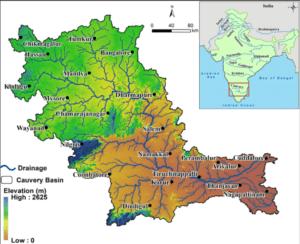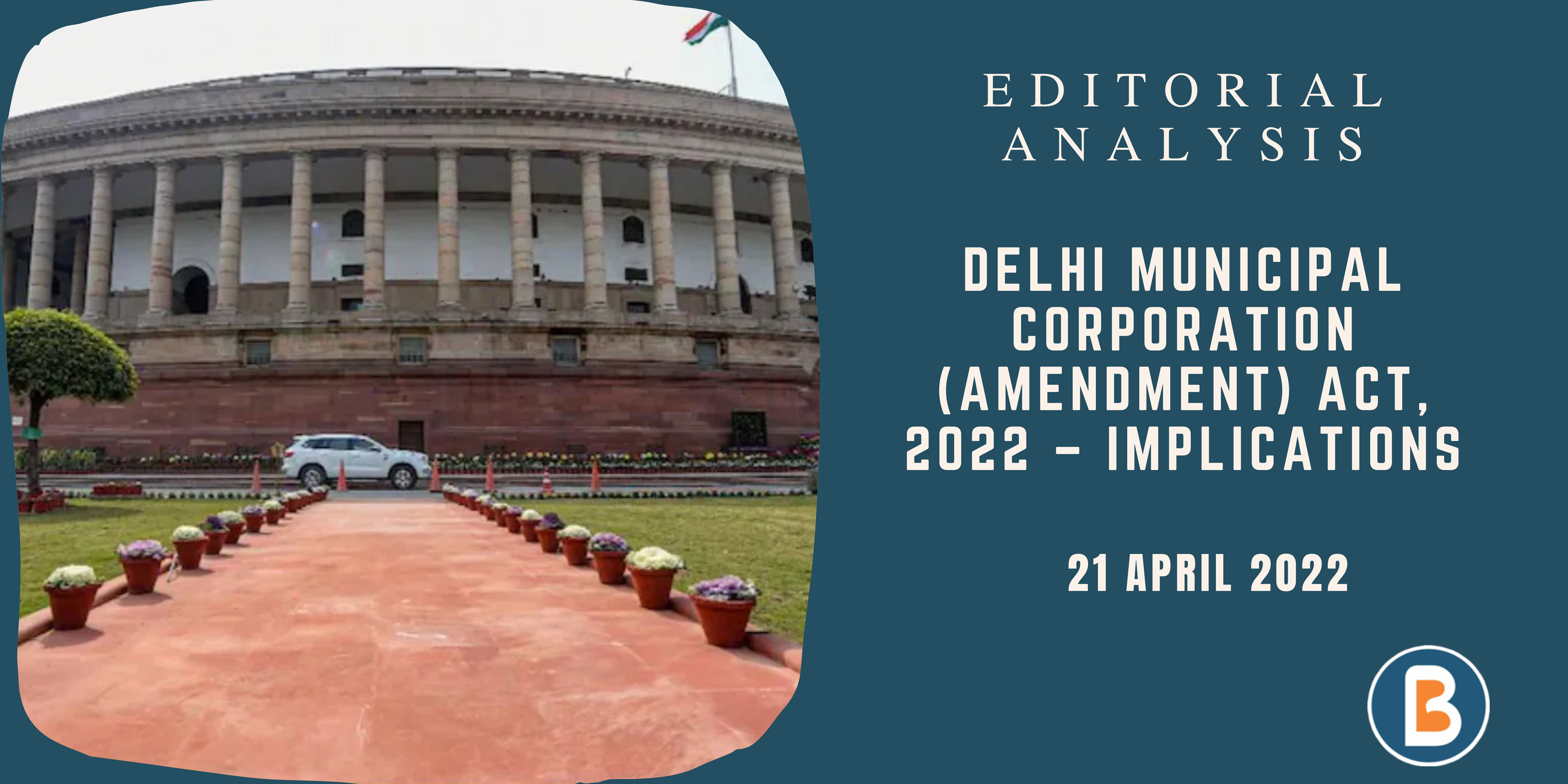Bengaluru Water crisis
Context:
Insufficient rainfall and under-replenishment of water sources have exacerbated water crisis in Bengaluru affecting thousands of villages, wards and talukas.
Relevance:
GS-03 GS-01(Environmental degradation and pollution, Water resources)
Mains Question:
Discuss the current state of water crisis in India and suggest measures to tackle them. 150 words
Cauvery Basin:
- Cauvery basin extends over an area of 81155 sq.km. which is nearly 2.7% of the total geographical area of the country.
- It is bounded on the west by the Western Ghats, on the east and south by the eastern Ghats and on the north by the ridges separating it from the Tungabhadra and Pennar basins.
- The basin lies in the States of Tamil Nadu, Karnataka and Kerala.
- Physiographically, the basin can be divided into three parts – the Westen Ghats, the Plateau of Mysore and the Delta.
- The delta area is the most fertile tract in the basin.
- The principal soil types found in the basin are black soils, red soils, laterites, alluvial soils, forest soils and mixed soils.
- Red soils occupy large areas in the basin.
- Alluvial soils are found in the delta areas.
- The culturable area of the basin is about 5.8 M. ha which is about 3% of the culturable area of the country.

Dimensions of the Article:
- Understanding the Water Crisis in Karnataka
- Challenges of Urban Growth and Short-Term Solutions
- The Role of Climate Change
Understanding the Water Crisis in Karnataka:
- The focal point of the crisis lies in Bengaluru, which relies heavily on water from the Cauvery river watershed and groundwater reserves.
- Insufficient rainfall in recent years, compounded by under-replenishment of water sources, has exacerbated the situation.
- Karnataka received 38% deficit in north-east Monsoon showers from October to December. The State received a 25% deficit in southwest monsoon rain from June to September.
- Despite previous data indicating erratic rainfall patterns in Karnataka, Bengaluru’s lack of preparedness has caused more impact.
- AS per Karnataka State Natural Disaster Management Centre (KSNDMC), the water levels in Cauvery Basin reservoirs are at 39% of their total capacity as of 2024.
Challenges of Urban Growth and Short-Term Solutions:
- Rapid Urban Growth: Bengaluru’s rapid urban growth over the past century has strained its water resources, leading to unsustainable consumption patterns.
- Inadequate management: The city’s reliance on external water sources, coupled with inadequate groundwater recharge rates, has heightened vulnerability to water scarcity.
- Lack of Long-term solutions: Short-term solutions implemented in response to crises, while necessary, often fail to address underlying systemic issues. Moreover, the cyclical nature of political leadership exacerbates the challenge, as long-term planning is often overshadowed by short-term political agendas.
The Role of Climate Change:
- Climate change further complicates the water crisis by introducing non-linear changes in rainfall patterns, leading to unpredictability and exacerbating water scarcity.
- The Indian Meteorological Department attributes the region’s poor rainfall to the El Niño phenomenon.
- Addressing the impact of climate change requires a holistic approach that integrates long-term adaptation strategies into water management policies.
Proposed Solutions:
- To mitigate the water crisis effectively, bipartisan solutions that transcend political cycles are imperative.
- A circular water economy, which maximizes the efficiency of water usage and reduces dependence on external sources, holds promise for sustainable water management
- Efforts to restore the health of water sources, such as the Cauvery river, are essential for ensuring long-term water security.



